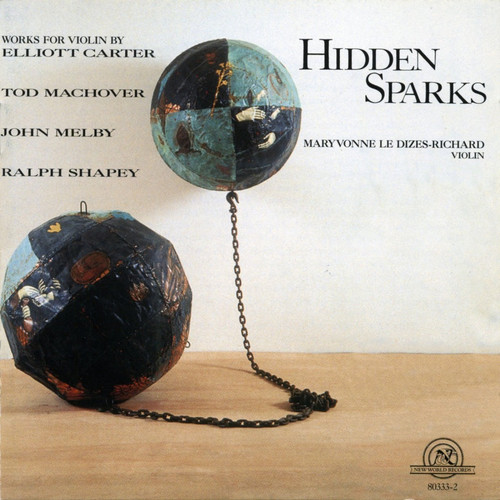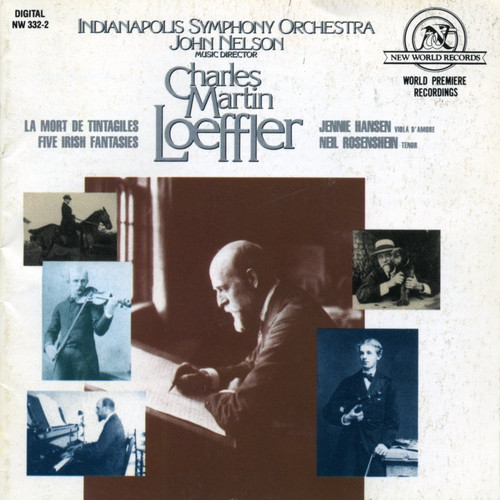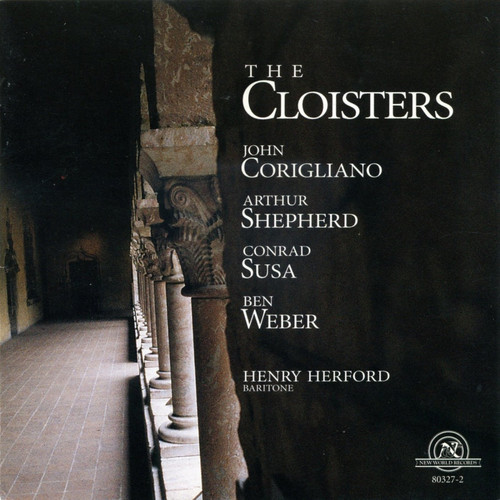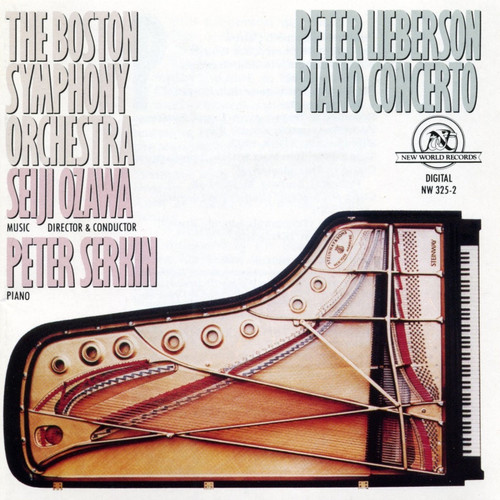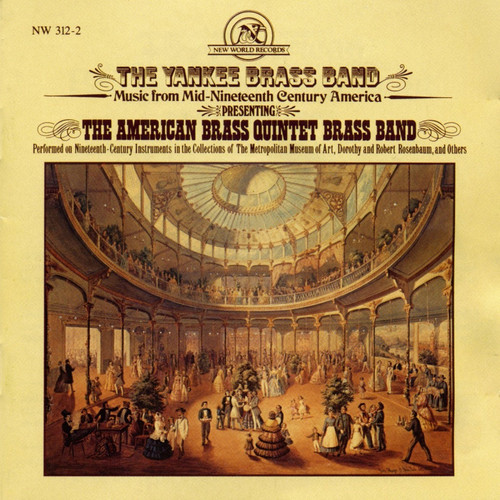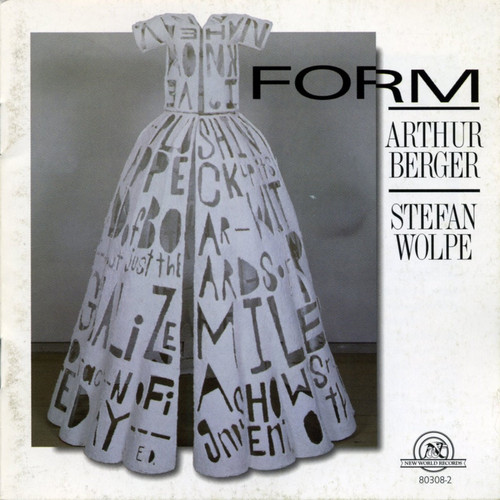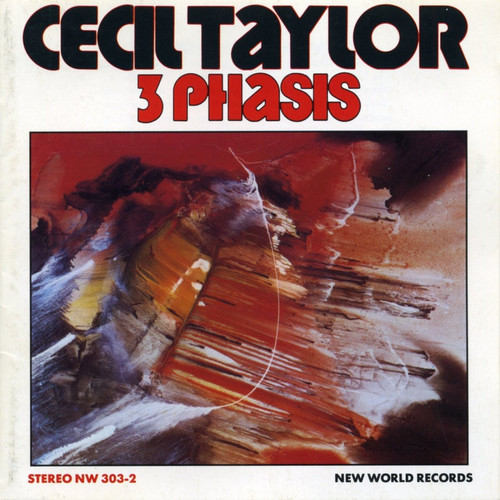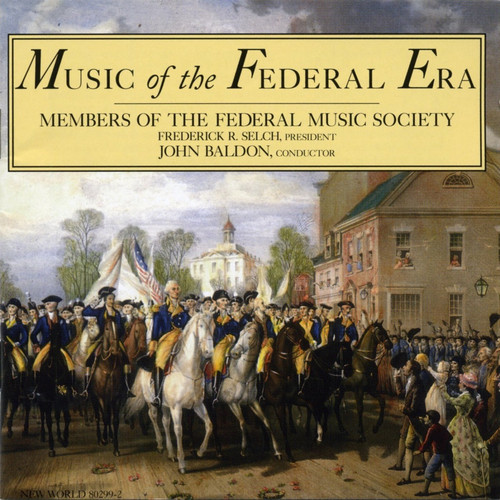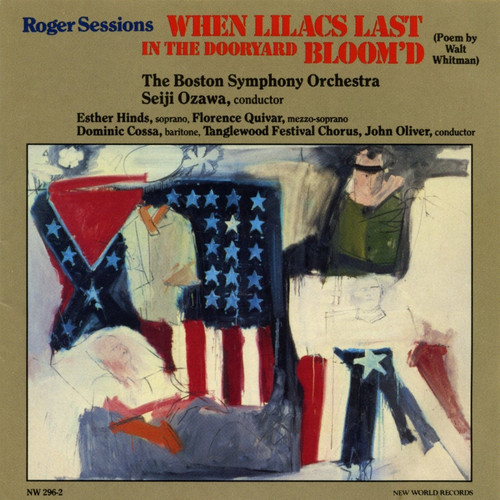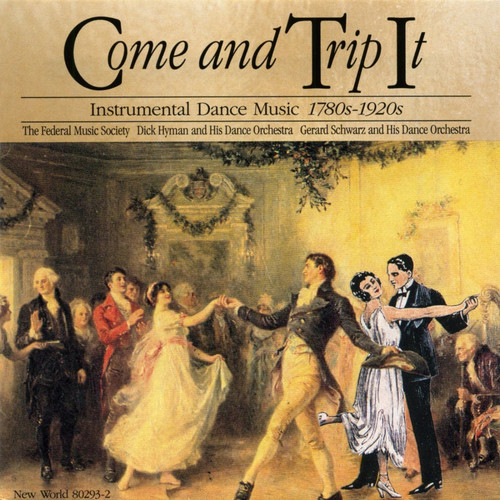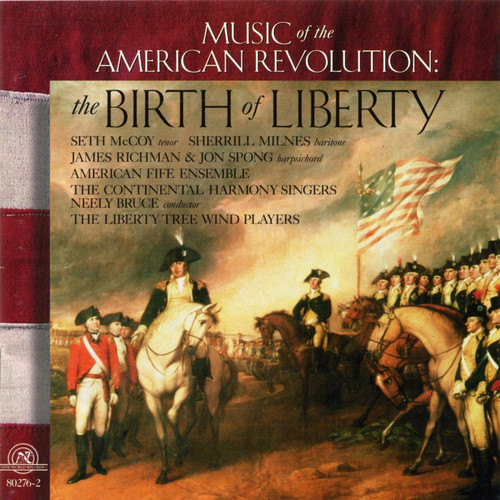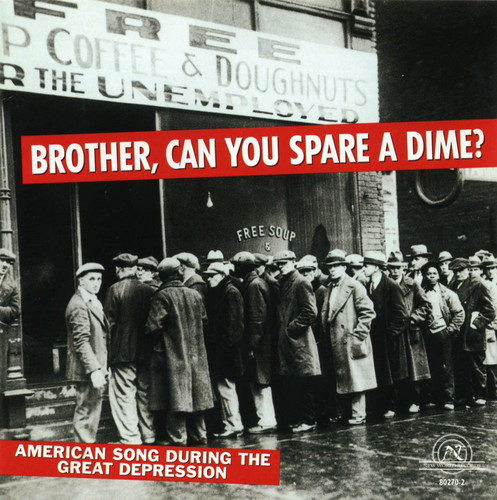★New World Records
Works By: Hugh Aitken, Aaron Copland, Walter Piston, Paul Schoenfield, Gunther Schuller
Perhaps from the habit of our nineteenth-century parlor-music tradition, perhaps from the frustration of trying to get orchestral works performed, American composers seem to have remained more active in the genre of the chamber sonata than their European counterparts. In America, the genre has received particular attention from composers of a classical or neoclassical bent, as the works on this recording, varied as they are in style and technique, bear out.
In 1945, when he wrote the Sonatina, W…
Hidden Sparks
This recording contains four works for violin by four disparate American composers with unique conceptions of the instrument and its possibilities, technical and expressive. Elliott Carter's Riconoscenza is a short work for unaccompanied violin imbued with a craggy, rough-hewn grandeur and arching melodic lines characteristic of his mature music. Fantasy for Violin and Piano by Ralph Shapey (b. 1921) typifies the unusual blend of astringency and lyricism of his dense, passionate and deeply rewa…
Indianapolis Symphony Orchestra, John Nelson (5), Jennie Hansen, Neil Rosenshein, Charles Martin Loeffler
La Mort De Tintagiles / Five Irish FantasiesThe music of Charles Martin Loeffler (1861-1935) was a rarity in the United States. Much admired for its artistry, it was yet so individual and its Symbolist aesthetic so unusual that Loeffler acquired a reputation that set him apart from other American composers of his generation. Loeffler came to America at the age of twenty. Behind him he had a cosmopolitan European background: He was born in France and had lived there and in Germany, Hungary, Russia, and Switzerland.
As a composer Loeffler w…
Sinfonia / Symphony No. 1
John Harbison's music draws together gestures and ideas from musical worlds that reflect such favorite composers as Robert Schumann and Heinrich Schutz, the songs of George Gershwin, and the hieratic qualities of Igor Stravinsky. His work has always been expressive, though never with a heart-on-sleeve emoting of personal angst, a mode that simply does not interest him. Recently Harbison has shown an interest in recapturing such historical genres as the formal set of variations (as in his Variati…
The Cloisters
The vocal music on this recording documents three generations of American music, each characterized by its own ideals yet shaped by its relationship to the past. Heard together on one disc, this music provides a glimpse of the rapid and often radical aesthetic upheavals that American music has undergone during the twentieth century. The three settings by Arthur Shepherd (1880-1958) - Golden Stockings, To a Trout, and Virgil - were composed shortly before World War II and exhibit a sensitive …
Piano Concerto
The Piano Concerto was Peter Lieberson's first orchestral work and was, from the outset, conceived with Peter Serkin in mind as the soloist. He wrote it after a long period of immersion in the study of Tibetan Vajrayana Buddhism. Throughout what Lieberson regards as the "journey" of the Piano Concerto, the character of each movement changes dramatically, though the very tune that unfolds at the opening of the work returns in full just before the end. Each of the three movements reflects in a mus…
Antony And Cleopatra
This is the premiere recording of Samuel Barber's Antony & Cleopatra, written for the opening of the new Metropolitan Opera House at Lincoln Center in 1966. Along with Vanessa, it is one of the peaks of Barber's output and one of the great American operas. Though it is rarely staged, this recording allows us to enjoy the fruits of Barber's accomplishment: the glamour of much of the vocal writing, particularly for Cleopatra; the richness, color, variety and imagination of the orchestration; the s…
Winter Cantata, Other Works
Vincent Persichetti's choral music plays an important part role in his output. In many ways his Mass is an orthodox a cappella Mass, its Renaissance heritage reflected in its use of a Gregorian chant as the unifying theme, and in its reliance on imitative counterpoint as its chief developmental technique. His Winter Cantata, based on a collection of haiku, is scored for women's chorus, flute, and marimba. Without any overt musical references, the work is Japanese in spirit, largely as a result o…
The Yankee Brass Band (Music From Mid-Nineteenth Century America)
Brass bands flourished in mid-nineteenth century America and were an integral and indispensable part of the social, cultural, and political life of the land. Regimental bands assumed tremendous importance during the Civil War whilst civic bands supplied the bulk of the entertainment in many a small town in the post-bellum years. It was during this period that the march as a genre experienced its greatest musical flowering with the advent of Sousa and his contemporaries. The schottisches, waltzes…
Concerto For Clarinet And Orchestra / Third Essay For Orchestra, Opus 47
The Third Essay was Samuel Barber's last completed work and its drama and lyricism are entirely characteristic of the neo-Romantic style he composed in for his entire life, a style which won him a large and faithful audience. In his avowed concern for writing music that communicates with the listening public, John Corigliano could be seen as an inheritor of Barber's mantle. The Concerto for Clarinet and Orchestra is a large-scale work that demonstrates his eclectic style at its finest. Corigli…
Form
Comet-like radiance, conviction, fervent intensity, penetrating thought on many levels of seriousness and humor, combined with breathtaking adventurousness and originality, marked the inner and outer life of Stefan Wolpe, as they do his compositions. -- Elliott Carter
Stefan Wolpe (1902-1972) is an acknowledged master of modern music whose oeuvre has had a lasting influence on both classical and jazz musicians. Though receptive to prevailing musical trends, Wolpe was an individualist who forg…
3 Phasis
3 Phasis is the companion disc to the Cecil Taylor Unit, both set down over four miraculous days in April 1978. It too is a testament to the perfectionism and unpredictability that are hallmarks of Taylor's music. As always, he is the instigator and barometer of the torrents of energy channeled through his able and sympathetic collaborators. This is music of a fierce and uncompromising beauty which sweeps all before it.
Music of the Federal Era
Music of the Federal Era is an excellent overview of late 18th and early 19th century compositions by Benjamin Carr, Oliver Shaw, Raynor Taylor and others, performed on period instruments. The variety of styles represented on this disc reflects two kinds of music that existed quite separately: one centered in the cities, essentially European in origin, and the other in villages and the countryside. For while America found itself politically independent at the end of the Revolutionary War, cultur…
Songs of Love, Luck, Animals, & Magic
In aboriginal times the coastal Indians of Northern California shared a tremendous wealth of food, clothing, and material goods. From Trinidad, California, to the Oregon border, the forests almost touch the Pacific Ocean, which gave the people the bounty of both the woodlands and the sea. The Tolowa and the Yurok, along with their neighbors the Hupa and the Karok, are the southernmost representatives of the elaborate Northwest Coast Indian culture area. This disc contains a variety of love songs…
When Lilacs Last In The Dooryard Bloom'd
Of the numerous settings of Walt Whitmans poetry, and this poem in particular, Sessions's is generally agreed to be one of the very finest and most sensitive. His mature style - a highly personal, instantly recognizable mix of severity and control with passion and serenity - projects the poetry now in simple chordal declamation, now in the long, high-arched melodies of which he is the master, conveying wonderfully the feel and variety of Whitman's lines. Over the years, Sessions's elegy has ta…
Come and Trip It-Instrumental Dance Music: 1780s to 1920s
This recording demonstrates some of the major developments in American social dancing and its music from after the Revolution up to the beginning of electrical recording in the mid-1920s. Dances such as the waltz, polka, tango, quadrille, charleston, cakewalk and turkey-trot are still familiar today, their names holding a permanent place in popular culture. The music they were danced to, however, is often forgotten.
This collection of hits, fads and phenomenons from the history of social dancin…
Quartet Romantic
The generation of American composers who came of age in the 1920s are now generally acknowledged as seminal figures in the creation of a truly indigenous American art music. Quartet Romantic makes available for the first time on CD several important chamber works by four of these figures - Henry Cowell, Ruth Crawford Seeger, Wallingford Riegger, and John Becker - as well as an early work by Cowell's most famous pupil, Lou Harrison.
Yes Sir, That's My Baby (The Golden Years Of Tin Pan Alley 1920-1929)
The naive romanticism of the Jazz Age, when, as F. Scott Fitzgerald saw it, "people danced in a champagne haze on the rooftop of the world," was nowhere more clearly reflected than in America's popular music of the 1920s. The banal optimism, the desperate gaiety, the tinsel pretentiousness, the childish excitement, and the innocent beauty of the songs between the end of World War I and the Depression demonstrate how sweet and sad and silly a time it was. The subject matter of the love songs, the…
Seth McCoy, Sherrill Milnes, James Richman, Jon Spong, American Fife Ensemble, The Continental Harmony Singers, The Liberty Tree Wind Players
Music Of The American Revolution: The Birth Of LibertyAn evergreen for Fourth of July festivities, this reissue of music from the American Revolution restores to the catalog a classic of the original Recorded Anthology of American Music. It is a scholarly and well-programmed musical recreation of a defining moment in the nation's history, mixing propaganda songs, psalmody, fife-and-drum music, and wind band music, the four types of music most prevalent and popular at the time.
Highlights include baritone Sherrill Milnes's renditions of three propa…
Brother, Can You Spare A Dime? (American Song During The Great Depression)
American society was much less homogeneous during the Great Depression (1929 - 1941) than it became after World War II. There were still quite sharply defined classes, divided along economic, geographic, and ethnic lines. Each group was affected by the Depression, but in different ways and to different degrees. Each had its own tradition of popular song, and this carefully compiled sampling of recordings from the thirties gives a vivid picture of how each fared and how it reacted to the almost u…

